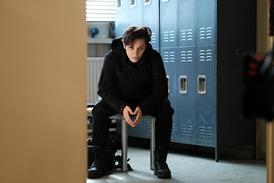No industry is immune from the economic slump - broadcast manufacturers are feeling the pinch along with the rest of country, but there are grounds for optimism that the sector can engineer itself out of trouble.
On the surface, things don't look good. Microsoft and Philips have announced 5,000 job cuts, Thomson has put its broadcast division Grass Valley up for sale, and Sony is planning 16,000 redundancies following its biggest ever operating loss ($2.9bn) as the global crisis saps demand for TVs, cameras and video game consoles.
When large and successful brands such as Autodesk and Avid restructure (each shedding about 10% of their global workforce) and the price of technology stocks nosedive, then there must be concern for the longevity of firms supplying niche product into the broadcast chain.
The International Association of Broadcasting Manufacturers (IABM), in an extensive report published last September, suggested that TV industry suppliers were likely to see their normal annual growth rates of 12.5%-15% fall to nearer 5% this year.
“For a lot of our small manufacturers, business has gone off the cliff,” says chief executive Roger Stanwell. “The phones stopped ringing in November and those encumbered with bank debt have to be extremely careful.”
Future-proof investment
However, British test and measurement equipment vendor Hamlet, an established name, but hardly an international giant, visits April's trade show NAB confident of business.
“We're not doing badly,” says managing director Steve Nunney.
“Occasionally project budgets are being stopped, but we believe customers are looking for product and platforms that are future-proofed and where they can see a high return on investment. Certainly there's discounting, similar to that seen on the high street - if you need a piece of kit then it's a good opportunity to get it now for less.”
This year is an unnaturally lean one given that there are no ‘quadrennial' events to provide a focus for investment, unlike 2008's Beijing Olympics and US Elections. From 2010, however, the fallow period ends, with the South African World Cup, Commonwealth Games in Delhi, plus build-up to the BBC's MediaCity:UK relocation, digital switchover and London 2012 Olympics.
“Budgets for these and major projects such as a newsroom or asset management systems have been set-aside before the downturn, giving the industry 12-18 months of a buffer,” reports Screen Digest TV Technology analyst Tom Morrod. “This should keep the industry stable for a while.”
“The industry is slower into recession compared with others, but may be slower out of it,” agrees Stanwell. “Broadcasters still need major infrastructure refurbishments, so any that are put on hold will mean plenty of pent-up demand when the economy picks up. It's a tough message for suppliers, but those that can hold on through the downturn will find orders to help them come out the other side.”
Certain overseas markets will experience growth, he suggests. Cash-rich sheikhs are continuing to fund massive media projects in the Middle East and there is considerable scope for sales of digital equipment in Eastern Europe, in contrast to the UK and the rest of Europe where product margins have been slashed. “Customers want the latest technology but are not prepared to pay a greater price,” concurs Sony UK's general manager, media sales, Mark Bainbridge. “They want HD production at SD budgets.”
Just as global sales of HD product have peaked, manufacturers from Hamlet to Harris have begun pushing a new HD gold standard - 1080 50/60P - bringing to market the 3Gps kit that supports it. “Everyone purchasing studio cameras and switchers is talking about it,” says Bainbridge. “It's beneficial for entertainment and sports and a crucial investment for all major broadcasters and facilities.”
However, Sony's target to double its European revenues in three years by 2010 has had to be reset. “It's still a goal and we're still on track for growing the business, but we've had to take account of the conditions,” he admits.
One upside is that manufacturers are seeing greater demand for energy-efficient product. Whereas 12 months ago going green may have been aspirational, it is now a selling point as facilities look to cut their operational overheads.
Savvy manufacturers are also in a strong position to innovate a way out of trouble provided the R&D budget isn't axed. “That would be a near fatal decision,” believes Autodesk's television industry manager Bruno Sargeant. “Now is the time to push out new product because innovation drives this business forward.”
The pitch from most vendors is that technology has a central role to play in helping broadcasters deliver greater productivity from fewer staff. “One way to rationalise and improve our customer offering is to build shared toolkits,” says Sargeant. “Customers are asking for greater integration and the ability to share applications, so that's what we're focusing on.”
Innovation is key
The IABM reports R&D investment to be under threat but urges companies not to cut back. “Solid state capture, IT networks and file-based systems are still in their infancy and need a lot of engineering,” says technology director John Ive. “Innovation will pay off for those that stay the course.”
Others see the ‘green shoots' of recovery in convincing consumers that 3DTV is a must-have item. The technology to produce and broadcast stereoscopic programming just needs refining. More cheap home displays and more content are required to watch on them.
“If stereoscopic production goes mainstream, it would drive new advertising or subscription services for broadcasters to create work for producers and post producers and equipment sales to support it,”
declares Quantel strategic marketing director Mark Horton. Even the most optimistic predictions, however, don't have this happening before 2012.
Ultimately, the niche nature of the industry may stabilise its future. It's one which requires very particular expertise in video engineering and intense client-based contact, making it hard for newcomers to break in, securing the future of existing players.
“Broadcast manufacturing is not a high-value industry compared with
finance or defence,” explains Morrod. “It requires considerable hands-on activity and near-failsafe systems reliability - things you'd expect in other industries but without the same volume or returns.
Consequently, it's difficult to see real value for other conglomerates deciding to enter the industry.”
That may provide little reassurance but there's a consensus that those companies still standing will emerge from recession stronger.
“The industry will be more efficient,” insists Stanwell. “Manufacturers are being affected by the downturn, yet they're also inventing the ideas that will help broadcasters save cash and improve their productivity.”
IABM FORECASTS GLOBAL HARDWARE MARKET
According to IABM's September 2008 Global Market Study, the global market for hardware, software and system products was worth $15.1bn. Resellers account for a further $1bn and a services segment worth $9.5bn, valuing the total global broadcast and media technology business at $25bn.
Revenues were forecast to grow at 7% in 2009 and 9% in 2010 before going back into double digits in 2011. Europe, Middle East and Africa accounted for almost half of the market in 2008 (49%) with the Americas 35.5% and Asia Pacific 15.5%.
Up to 2012, Africa and China will have the fastest growth rates at more than 19% (CAGR) compared with Western Europe and Japan, with 5% growth.
Reflecting on the IABM's September 2008 survey, chief executive Roger Stanwell insists: “All bets on forecast growth are off. This is what makes planning so difficult for members. We are looking for the bottom, which we hope might be clearer by mid year - then it is a question of how long a recovery will take.”
In an IABM/Ernst & Young survey of last December, 43% of IABM members said they expect the situation to be deteriorating a year from now. “The situation is significantly more severe than even our 2008 study suggested,” adds Stanwell. “The unit prices for core broadcast hardware are much the same as in 1970.
A studio camera cost £50,000 then, and today it costs about the same. In real terms, that means hardware has got cheaper, but [for manufacturers] this has been counterbalanced by greater demand from broadcasters. With broadcasters facing horrifying debt-to-income ratios, buying decisions are being put on hold.”


























No comments yet